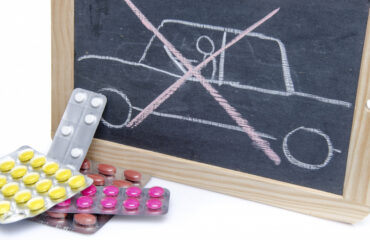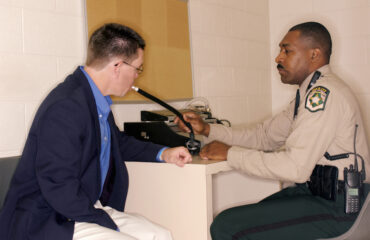Drugged Driving: The Time Has Come for Action
“[T[he Roadside Survey of Alcohol and Drug Use by Drivers, conducted by NHTSA in 2013-2014, shows that weekend nighttime drivers testing positive for illegal drugs or medications has increased from 16.3 percent in 2007 to 20.0 percent in 2013-2014″
2015 National Drug Control Strategy, U.S. Office of National Drug Control Policy, pg. 105
People driving while impaired by drugs other than alcohol have been doing so for years. In the early 1970s, Los Angeles law enforcement officers developed the Drug Recognition Expert (DRE) program to identify drivers that were drug impaired. The program has expanded to every state and is now an international endeavor known as the Drug Evaluation and Classification (DEC) Program. Still, even after all these years, the fight to end impaired driving remains heavily focused on alcohol with far less attention paid to drug-impaired operators. But, times have changed and a broader perspective is required.
Drugged Driving is a Growing Concern and Getting Worse
Research demonstrates that drugged driving is a significant problem nationwide. A study conducted by the National Highway Traffic Safety Administration (NHTSA), the 2007 National Roadside Survey of Alcohol and Drug Use by Drivers found that:
-
- One in eight Americans driving on a weekend night tested positive for an illicit drug.
- Of the 16.3% of drivers who tested positive for drugs, 11.3% were positive for illegal drugs, 3.9% for medications and 1.1% for both illegal drugs and medications. The most common illegal drugs were cannabis (8.6%), cocaine (3.9%) and methamphetamine (1.3%).
Two years later, NHTSA released additional research determining that 33% of all deceased drivers with known drug test results in 2009 tested positive for drugs other than alcohol. This includes illegal substances as well as over-the-counter and prescription medications. While the research did not say that every person who tested positive was impaired, the extent of positive tests is troubling.

Some 12.6 percent of drivers had evidence of marijuana use in their systems, up from 8.6 percent in 2007.im
In 2013-2014 NHTSA did a new National Roadside Survey. This survey, similar to the 2007 one, was designed, among other things, to determine a driver’s use of a variety of potentially impairing drugs. The survey confirmed a continuing decline of alcohol-impaired drivers on the road. This was also true for those individuals even testing positive for the presence of alcohol. However, for testing for other drugs besides alcohol, the news was not good.
-
- About 20.0 percent of drivers tested positive for at least one drug in 2014, up from 16.3 percent in 2007.
- Some 12.6 percent of drivers had evidence of marijuana use in their systems, up from 8.6 percent in 2007.
- More than 15 percent of drivers tested positive for at least one illegal drug, up from 12 percent in 2007.
Fact Sheet: National Roadside Survey of Alcohol and Drug Use by Drivers
People are dying because of drugged driving, and the problem is growing. Clearly, drugged driving is a significant issue that can’t be left on the side of the road; the problem is not going away. In fact, it is growing. What are we to do?
Working Together We Can Save Lives
Six years ago drugged driving was included as a national priority in the U.S. National Drug Control Strategy. That is still true in 2016. The strategy calls for us to:
-
- Increase public awareness
- Enhance legal reforms to get drugged drivers off the road
- Advance technology for drug tests and data collection, and
- Increase law enforcement’s ability to identify drugged drivers.
The Office of National Drug Control Policy (ONDCP) and other federal partners have provided a jump start in the effort to end drugged driving, such as NHTSA doing additional research on this topic and the National Transportation Safety Board (NTSB) expanded its discussion to include substance-impaired driving. But more is needed. It will take every one of us to educate ourselves with the facts. It will require every one of us to take action, whether it is in our own homes, at work, or within the community.
Steps for Action
It will take every one of us to share the message that drugged driving is deadly:
-
- Parents can and must talk with their children.
- Friends can and must talk to friends.
- Employers can and must educate their workers and set policies that enforce those discussions.
- Doctors can and must interact with their patients and understand the signs of substance use problems
- Law enforcement officers and prosecutors can and must be trained on the effective identification, arrest, and adjudication of the drugged driver
- Judges must be trained to preside over trials and other court proceedings involving drugged drivers* and,
- Public leaders can and must look at the research and understand that proactive legislation can make a difference; they must be willing to discuss this deadly crime in an effort to protect the community.
There is no overnight remedy to this growing scourge. There is no silver bullet that will end it. It will take continued discussion and effort. The first step in this fight is acknowledgement of the problem, and believing that we can make a difference. Like throwing a pebble into a pond, as we influence those around us, they, too, influence those around them in an ever-increasing circle. On this issue, it is up to every one of us to create a circle that ripples across our communities, our states, and ultimately our country.
*The National Judicial College is presented a course, “Drugged Driving Essentials,” Sept. 27-29, 2016. The lead faculty was JSI President Judge Peggy Hora (Ret.).
Get more articles like this
in your inbox
Subscribe to our mailing list and get the latest information and updates to your email inbox.
Thank you for subscribing.
Something went wrong.








